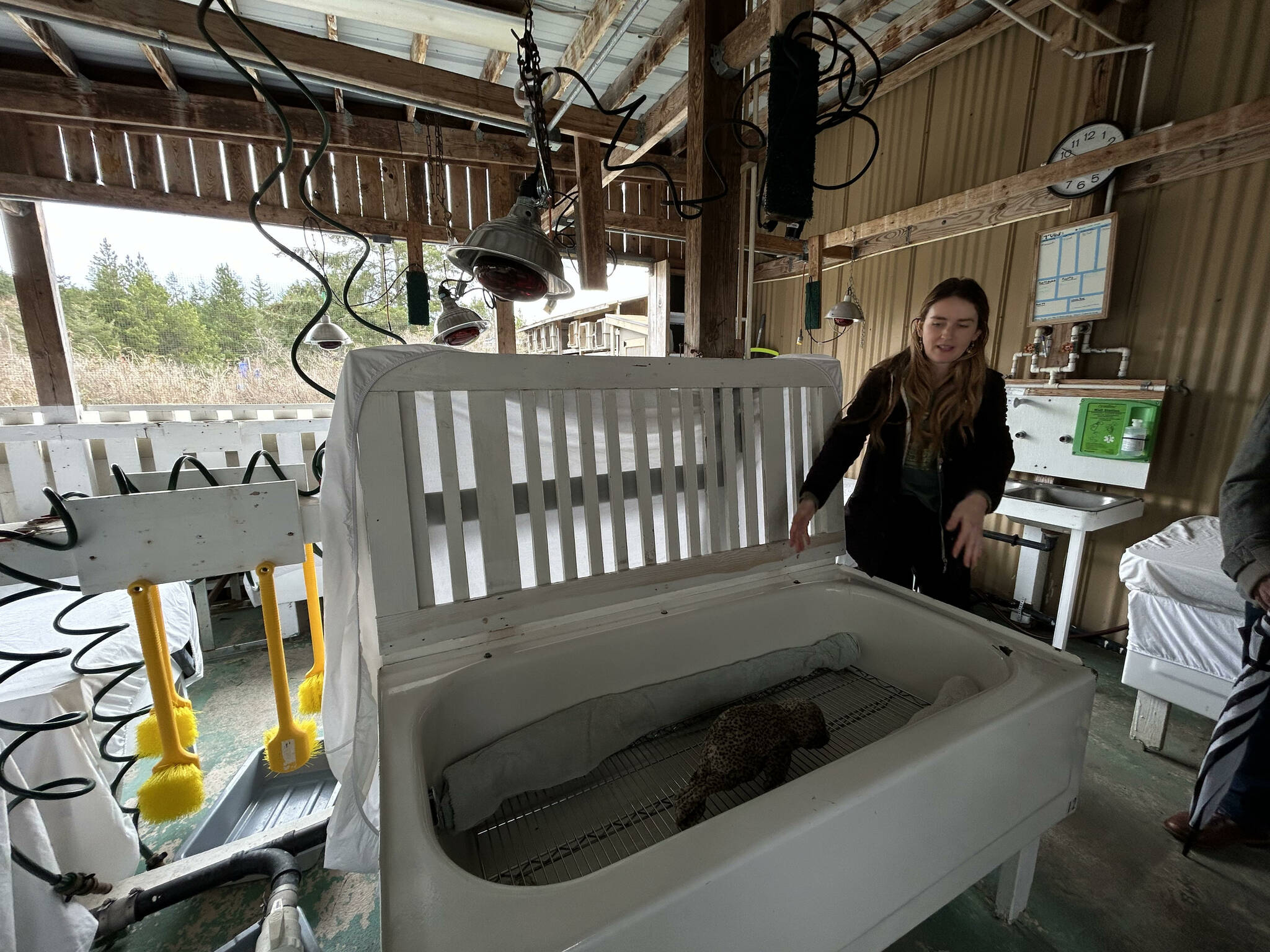By Aiden Haines
Tucked in the trees on Boyce Road on San Juan island is Wolf Hollow Wildlife Rehabilitation Center. Wolf Hollow is a non-profit organization and their mission is to “promote the well-being of wildlife and their habitats through rehabilitation of injured and orphaned wildlife, public education and non-invasive research.” Wolf Hollow helps various types of wildlife, if there is an orphaned baby bird or an injured seal pup, they can help.
On Saturday April 1, Wolf Hollow celebrated 40 years of operation. In these 40 years, Wolf Hollow has treated over 20,000 animals and 207 different species. Wolf Hollow has four full-time staff members, a part-time staff member, as well as many volunteers that help the organization run smoothly. Since the beginning of Wolf Hollow, volunteers have been a vital part of operations.
On April 1, Wolf Hollow was offering informational tours around their facilities, different photos of animals that have been treated at Wolf Hollow, and merchandise for sale. The tour was informational and entertaining. The tour guide and animal rehabilitator, Elizabeth, was very informative and passionate about the work that she does at Wolf Hollow. She showed off the facilities, medical equipment, and a few of the enclosures that are used to house their wildlife patients.
Executive Director, Chanda Stone provided a brief timeline of Wolf Hollow’s history:
1981 – Veterinarian, Jessica Porter (now Meg Lainson), opened a veterinary clinic in Friday Harbor. The clinic was located in a building that stood close to the site now occupied by the Inn at Friday Harbor Suites, in the town of Friday Harbor.
1982 – In the spring of this year, Judith Carter became Jessica’s Veterinary Assistant. The first wild patient, a Great Horned Owl, arrived in March. Eleven wild animals were treated during this year.
1983 – Wolf Hollow became licensed as a wildlife rehab center. Thirty-two wild animals were cared for, in addition to the domestic animals treated at the veterinary clinic. It became incorporated as a non-profit organization in 1984.
1984-86 An increasing number of wild creatures were cared for. Enclosures to house wildlife including songbirds, raptors, raccoons, and deer were built on the eighth-of-an-acre yard of the vet clinic as well as staff members’ homes. A number of locals volunteered time to assist with animal care. As the number of wild patients increased, it became obvious that Wolf Hollow needed more space.
1986 – The 40-acre parcel where Wolf Hollow is currently located, was leased. Work began to turn it into a Wildlife Rehabilitation Center. At this time the only structure on the property was a large metal building with a dirt floor. A grant was received to install utilities, a well was dug, floors were laid in the building, and it was divided into several rooms. Upstairs was living accommodation and downstairs was animal care. The first wildlife enclosures were built on the property.
1987 – Wolf Hollow Wildlife Rehabilitation Center treated 172 animals at its new location.
1989 – Founder Jessica Porter made an initial down payment to buy the Wolf Hollow property using funds she earned working at the Exxon Valdez Oil Spill. Wolf Hollow then made monthly payments. To keep up with the animal caseload, more than 30 enclosures have been constructed on the site over the years, ranging from seal pools and an eagle flight to songbird aviaries and duck tubs.
1999 – Wolf Hollow put together plans for the future in order to renew their Conditional Use Permit for the next 20 years.
2004 – The last of their mortgage was paid off by generous donors, the Salquists, so Wolf Hollow now owns the 40-acre property free and clear.
2010-2022 – Using grants, bequests and donations, Facilities Manager Mark Billington and maintenance volunteers gradually replaced older enclosures.
For more information, visit https://wolfhollowwildlife.org/



